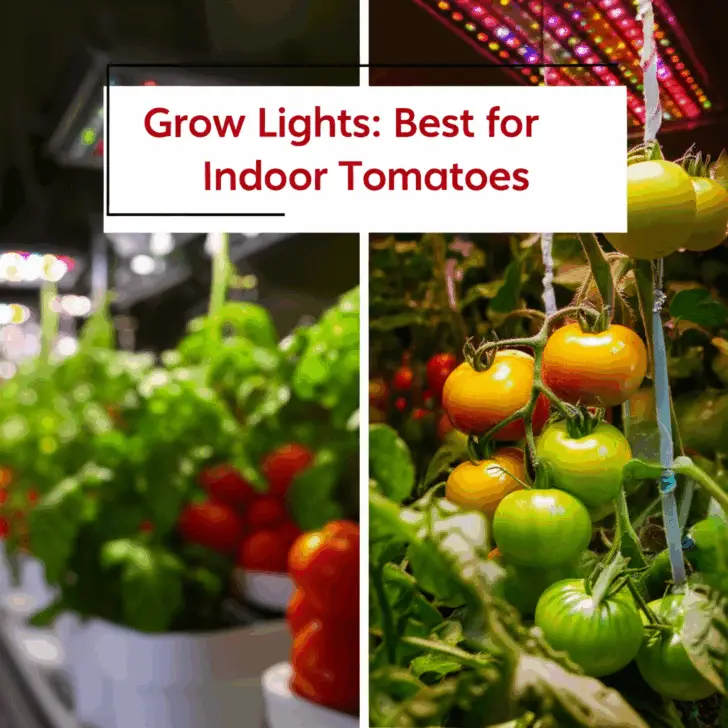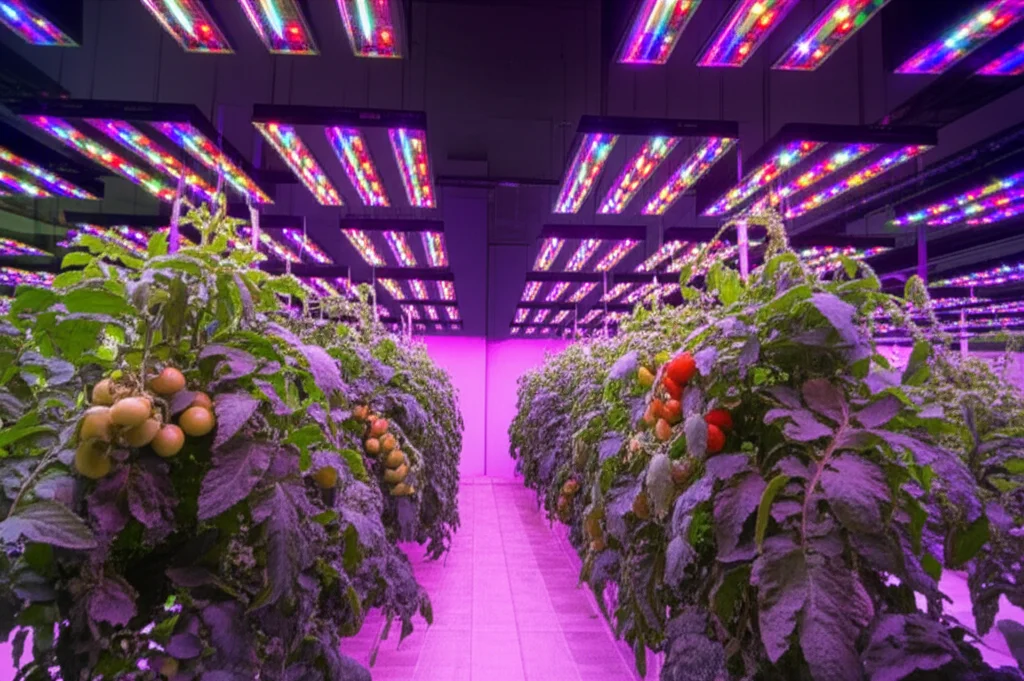This comprehensive guide explores everything you need to know about using grow lights for indoor tomato plants, from choosing the right type of light to setting up your indoor garden for a bountiful harvest.
Growing juicy, ripe tomatoes indoors is entirely possible with the right setup, and grow lights play a crucial role. This guide will walk you through the process, ensuring you have the knowledge and resources to cultivate delicious tomatoes year-round, regardless of the weather outside.

JUMP TO TOPIC
Understanding the Need for Grow Lights
Tomatoes are sun-loving plants that require 6-8 hours of direct sunlight daily for optimal growth and fruit production. Indoor environments rarely provide this much natural light, especially during winter months. Grow lights supplement or replace sunlight, enabling you to grow tomatoes successfully indoors, even in dimly lit spaces.
Why Choose Grow Lights for Indoor Tomatoes?
- Year-round Growing: Grow lights allow you to enjoy fresh tomatoes regardless of the season or climate.
- Control over Environment: Indoor growing provides greater control over temperature, humidity, and pests.
- Maximize Yield: With consistent and optimal lighting, you can maximize your tomato yield.
- Space Optimization: Grow lights enable vertical gardening, making the most of limited indoor space.
Types of Grow Lights for Tomatoes
Choosing the right type of grow light is crucial for the success of your indoor tomato garden. The most common types include:
LED Grow Lights
LED (Light Emitting Diode) lights are energy-efficient and produce minimal heat, making them ideal for indoor use. They also offer a customizable light spectrum, allowing you to tailor the light to different growth stages of your tomato plants.
HPS Grow Lights
HPS (High-Pressure Sodium) lights produce a strong orange-red light, which is beneficial for flowering and fruiting. They are generally less expensive than LEDs but produce more heat and consume more energy.
Fluorescent Grow Lights
Fluorescent lights are a budget-friendly option, but they are less energy-efficient than LEDs and produce less intense light. They are suitable for seedlings and smaller plants but may not be sufficient for mature tomato plants.
Choosing the Right Light Spectrum
Tomato plants require a full spectrum of light, mimicking natural sunlight. Look for grow lights that offer both blue and red light wavelengths. Blue light promotes vegetative growth, while red light is essential for flowering and fruiting.
Setting Up Your Indoor Tomato Garden with Grow Lights
Light Placement and Distance
The distance between your grow lights and your tomato plants should be adjusted as the plants grow. Keep the lights too close, and you risk burning the leaves. Too far away, and the plants may not receive enough light. Follow the manufacturer’s recommendations for your specific grow light.
Light Cycle for Tomatoes
Tomato plants require 14-18 hours of light per day during the vegetative stage and 12-14 hours during flowering and fruiting. Use a timer to automate your light cycle for consistent results (learn more about timers for grow lights).
Other Essential Factors
- Containers and Soil: Choose appropriately sized containers and use a well-draining potting mix.
- Watering: Water your tomato plants deeply and regularly, allowing the soil to dry slightly between waterings.
- Nutrients: Provide your plants with a balanced fertilizer specifically formulated for tomatoes.
- Temperature and Humidity: Maintain a temperature between 65-75°F (18-24°C) and a humidity level of 60-70%.
- Ventilation: Ensure adequate air circulation to prevent fungal diseases.
Maintaining Your Indoor Tomato Garden
Regularly monitor your tomato plants for signs of pests or diseases. Inspect the leaves, stems, and fruit for any unusual spots, discoloration, or insects. Address any issues promptly to prevent them from spreading. (Read our guide on common tomato plant problems – internal link example)
Pruning your tomato plants regularly (learn more about pruning techniques – internal link example) will help encourage bushier growth and improve air circulation, which can prevent diseases and improve fruit production.
FAQs about Grow Lights for Indoor Tomatoes
- Q: Can I use regular household bulbs for growing tomatoes indoors?
- A: While regular household bulbs provide some light, they lack the specific light spectrum necessary for optimal tomato growth. Grow lights are designed to provide the right balance of red and blue light that tomatoes need.
- Q: How much do grow lights cost to run?
- A: The running cost depends on the type and wattage of the grow light and the duration of use. LEDs are generally the most energy-efficient option.
- Q: How often should I replace my grow lights?
- A: The lifespan of a grow light varies depending on the type. LEDs typically last much longer than other types of grow lights.
- Q: How can I tell if my tomato plants are getting enough light?
- A: Look for signs of healthy growth, such as dark green leaves and strong stems. If the plants are leggy or pale, they may not be receiving sufficient light.
Conclusion
Growing tomatoes indoors under grow lights provides a rewarding way to enjoy fresh, homegrown tomatoes year-round. By following the guidelines outlined in this guide, choosing the right equipment, and providing consistent care, you’ll be well on your way to harvesting a bountiful crop of delicious tomatoes from the comfort of your home. Remember to continually monitor your plants and adjust your setup as needed for optimal growth. Happy growing!

